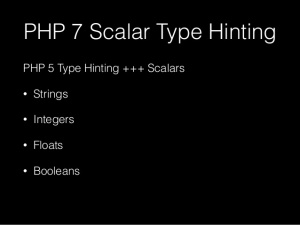Step By Stem Integration of SOLR on system With Magento Site :
Things we nedded :
1. JAVA Development Kit (JDK)
2. PHP
3. Apache Server
4. Solr extension (From Magento Connect )
If you are using Linix :
First open the Terminal :
Type :
rahul@rahul:~$ java -version (To check java is install or not ).
If not available then :
Follow this step ono by one :
rahul@rahul:~$ sudo rm /var/lib/dpkg/info/oracle-java7-installer*
rahul@rahul:~$ sudo apt-get purge oracle-java7-installer*
rahul@rahul:~$ sudo rm /etc/apt/sources.list.d/*java*
rahul@rahul:~$ sudo apt-get update
rahul@rahul:~$ sudo apt-get update
rahul@rahul:~$ sudo add-apt-repository ppa:webupd8team/java
rahul@rahul:~$ sudo apt-get install oracle-java7-installer
rahul@rahul:~$ java -version
Result :
rahul@rahul:~$ java version “1.7.0_04”
rahul@rahul:~$ Java(TM) SE Runtime Environment (build 1.7.0_04-b20)
rahul@rahul:~$ Java HotSpot(TM) 64-Bit Server VM (build 23.0-b21, mixed mode)
Now we have install java Successfully ;
Now come to apache server :
Install Apache server if not installed :
for 32-bit:
Type this on terminal or cmd :
rahul@rahul:~$ wget http://sourceforge.net/projects/xampp/files/XAMPP%20Linux/1.8.3/xampp-linux-1.8.3-2-installer.run/download
For 64-bit:
rahul@rahul:~$ wget http://sourceforge.net/projects/xampp/files/XAMPP%20Linux/1.8.3/xampp-linux-x64-1.8.3-2-installer.run/download
Now go to the download folder and rename the download file to :
xampp-linux-x64-1.8.3-2-installer.run
rahul@rahul:~$ sudo chmod +x xampp-linux-x64-1.8.3-2-installer.run
rahul@rahul:~$ sudo ./xampp-linux-x64-1.8.3-2-installer.run
To stop the XAMPP service:
rahul@rahul:~$ sudo /opt/lampp/lampp stop
To start the XAMPP service:
rahul@rahul:~$ sudo /opt/lampp/lampp start
Now we have install Lampp on our local server ;
still having any problem so visit :
http://ubuntuportal.com/2013/12/how-to-install-xampp-1-8-3-for-linux-in-ubuntu-desktop.html
Now we will install SOLR Server :
Download it from here : Download
Next unzip the package:
unzip solr-4.10.4.zip
Move newly created directory to /opt
Type this command on Terminal :
rahul@rahul:~$ sudo mv solr-4.10.4 /opt/
rahul@rahul:~$ cd /opt/solr-4.10.4/example/
if getting error bash permission denied or file directory not found, then provide permission to opt
by typing :
rahul@rahul:~$ sudo chmod 777 ‘/opt’ -R
rahul@rahul:~$ cd /opt
rahul@rahul:/opt$ cd solr
rahul@rahul:/opt/solr$ cd example
rahul@rahul:/opt/solr/example$ java -jar start.jar
Now it will show like this ;
4146 [coreLoadExecutor-5-thread-1] INFO org.apache.solr.search.SolrIndexSearcher – Opening Searcher@5bcfdbdb[collection1] main
4152 [coreLoadExecutor-5-thread-1] INFO org.apache.solr.rest.ManagedResourceStorage – File-based storage initialized to use dir: /opt/solr/example/solr/collection1/conf
4152 [coreLoadExecutor-5-thread-1] INFO org.apache.solr.rest.RestManager – Initializing RestManager with initArgs: {storageDir=/opt/solr/example/solr/collection1/conf}
4163 [coreLoadExecutor-5-thread-1] INFO org.apache.solr.rest.ManagedResourceStorage – Reading _rest_managed.json using file:dir=/opt/solr/example/solr/collection1/conf
4189 [coreLoadExecutor-5-thread-1] INFO org.apache.solr.rest.ManagedResourceStorage – Loaded LinkedHashMap at path _rest_managed.json using file:dir=/opt/solr/example/solr/collection1/conf
4190 [coreLoadExecutor-5-thread-1] INFO org.apache.solr.rest.ManagedResource – Loaded initArgs {} for /rest/managed
4190 [coreLoadExecutor-5-thread-1] INFO org.apache.solr.rest.RestManager – Initializing 0 registered ManagedResources
4191 [coreLoadExecutor-5-thread-1] INFO org.apache.solr.handler.component.SpellCheckComponent – Initializing spell checkers
4199 [coreLoadExecutor-5-thread-1] INFO org.apache.solr.handler.component.SpellCheckComponent – Registering newSearcher listener for spellchecker: default
4199 [coreLoadExecutor-5-thread-1] INFO org.apache.solr.handler.component.SpellCheckComponent – No queryConverter defined, using default converter
4213 [searcherExecutor-6-thread-1] INFO org.apache.solr.core.SolrCore – [collection1] Registered new searcher Searcher@5bcfdbdb[collection1] main{StandardDirectoryReader(segments_f:38:nrt _e(4.10.4):C5)}
4213 [coreLoadExecutor-5-thread-1] INFO org.apache.solr.core.CoreContainer – registering core: collection1
4214 [main] INFO org.apache.solr.servlet.SolrDispatchFilter – user.dir=/opt/solr/example
4215 [main] INFO org.apache.solr.servlet.SolrDispatchFilter – SolrDispatchFilter.init() done
4249 [main] INFO org.eclipse.jetty.server.AbstractConnector – Started SocketConnector@0.0.0.0:8983
Now go to the browser and type :
http://localhost:8983/solr/#/
The solr server run on 8983 port .
Now open your magento site Admin panel and go to the extension magento connect :
and type this in extension field :
http://connect20.magentocommerce.com/community/JeroenVermeulen_Solarium
install it and proceed it .
Now return to admin panel :
And go to System -> Configuration -> Catalog -> and find :
In this panel open General setting and Solr server
Enabled it and in solr server every thing is already set
Click on test connection if the result is success :
then only solr will run correct :
Now one more thing to do that is very important and o it very carefully :
Go to you root directory :
or : open : opt/lampp/htdocs/magento-folder/app/code/community/JeroenVermeulen/Solarium/docs/
And copy two file :
1: Schema.xml
2. Solrconfig.xml
And paste it at given folder :
Note : before pasting take backup of that file :
folder : opt/solr/example/solr/collection1/conf/
Congratulation now you have successfully configured Solr to your magento site , now add category and products to see the solr working .
Go to you home page of you website and search your product :
For solr documentation visit :
1: http://lucene.apache.org/solr/
Download some important notes : Magento_For_Php_Mvc





